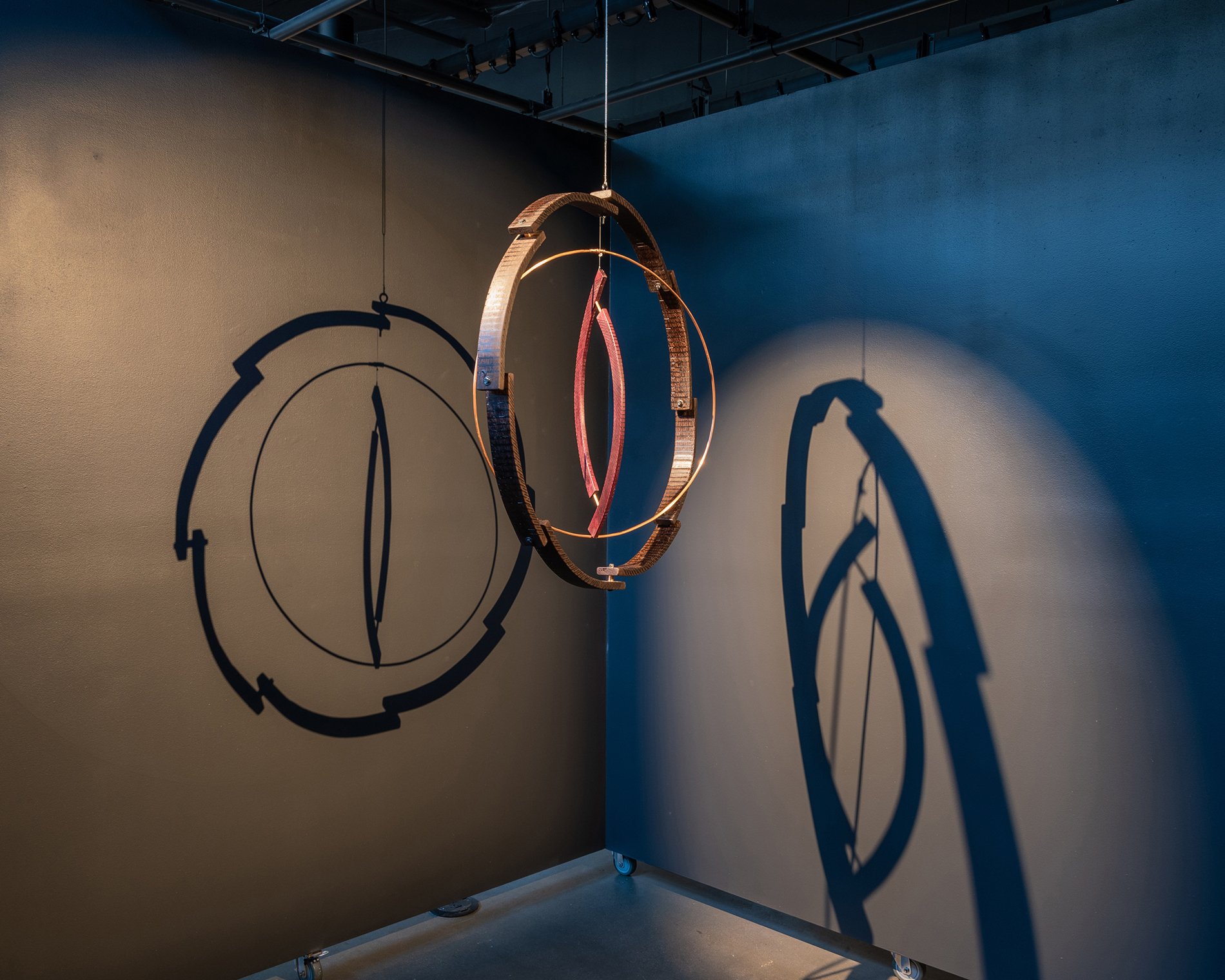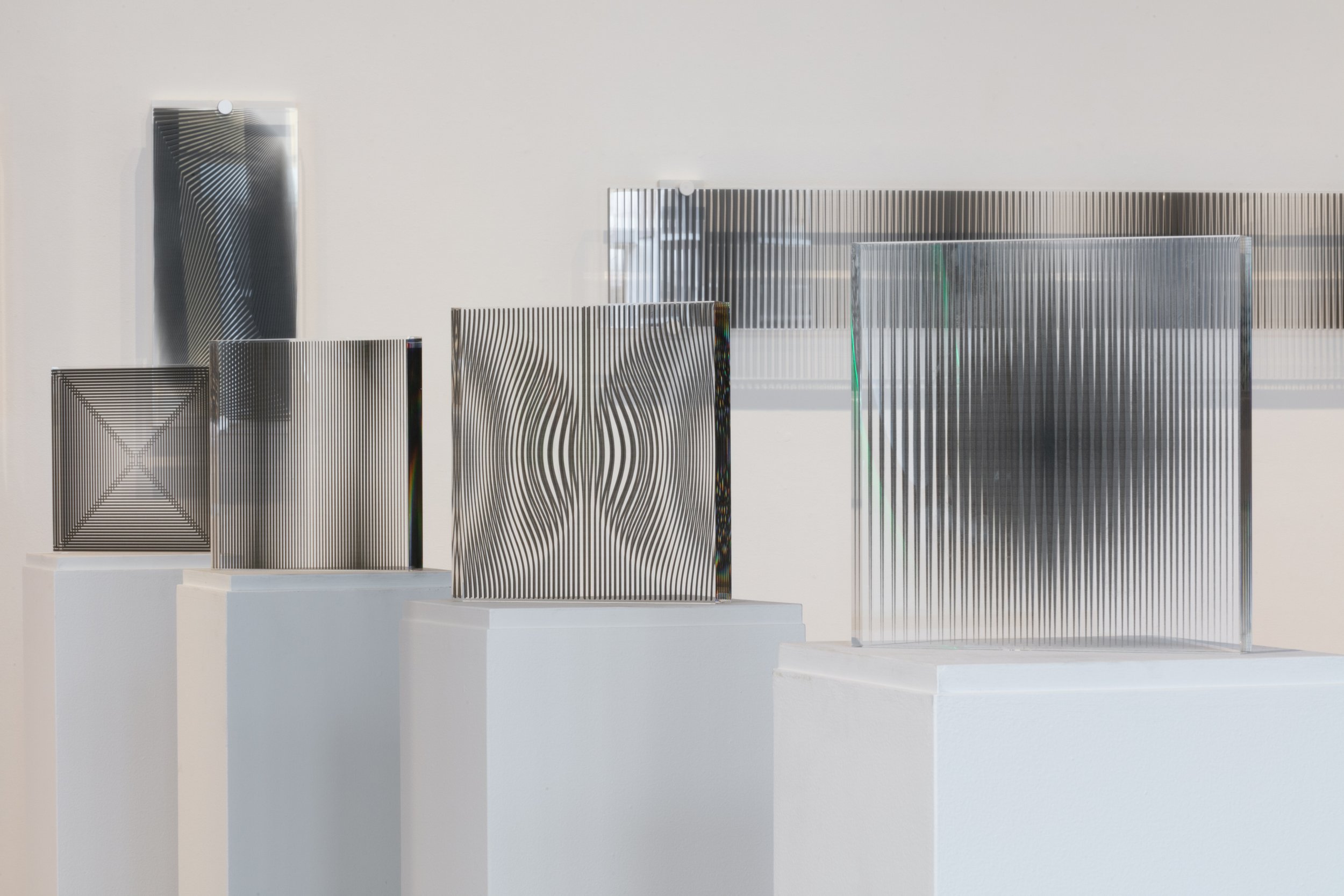modern post-modern: Presentness is grace
may 1-july 19, 2024
opening reception | may 1, 2024 – 4-7pm
The artists in this exhibition reference a visual language born in mid-century America: bold lines, bright colors, saturated flat canvases and curvilinear sculptural forms, where all meaning was self-contained. Unlike their predecessors, the artists in this exhibition imbue their work with connotation and acknowledge you, the viewer, in their art. “High Modernism” of the 1950s and 60s was a reaction to thousands of years of art around the world that was often representative, narrative, and promoted a message by a church, monarch, or wealthy patron. Modern artists asked the question: Why should my art tell someone else’s story? Why does it need to tell a story at all?
To get to the bare essence of art, many 60s modernists reduced their work to flat canvases, stretcher bars, dripping paint, saturated strokes, unprimed canvas, and poetically balanced sculptures. Artists such as Helen Frankenthaler, Frank Stella, Jules Olitski, Clyfford Still, and Morris Louis sought this distilled artform. The movement coalesced in the writings of Clement Greenberg and Michael Fried. In his seminal 1967 essay “Art and Objecthood,” Fried argued the then-new movements such as Minimalism, Conceptualism, and Pop Art were not in fact art, but objects. During this pivotal time, artists rebelled against the tenets of High Modernism, birthing the movement we now find ourselves in, Postmodernism. Artists such as Nancy Holt and Robert Smithson pulled their art from the confines of the museum and put it outside in the landscape. Feminists such as Cindy Sherman, Jann Haworth, and Carolee Schneeman confronted patriarchy and shattered the male gaze. Art was full of political and racial activism, challenging viewers to change their points of view and have empathy for those around them. This pivotal moment in history led to the powerful art we encounter today, and much of it still references this important turning point.
Autumn T. Thomas, Camila Galofre, Collin Parsons, and Vivian George reference the visual language of modernism in their work, but it is full of meaning that intentionally engages with the viewer. They confront issues of conservation, racism, human relationships, and the interconnectedness of our world.
At the end of “Art and Objecthood,” Michael Fried concluded with the powerful phrase “presentness is grace.” One beautiful aspect of High Modernists’ argument was that art should be inspired, and to truly appreciate it a viewer should be wholly mindfully present. This is more difficult than ever to accomplish as we’re constantly bombarded by news of conflicts around the world, doom scrolling, and getting Likes. As we’re able to quiet our minds and consider what we do and why we do it, art can inspire us to have more empathy for others and help us consider the impacts we have in the world. If we can be fully present when engaging with art and those around us. Presentness is Grace.
About the artists
CAMI GALOFRE
Cami Galofre is a Colombian contemporary visual artist based in Denver, CO.
She holds a BA in Studio Art and Environmental Science from Colorado College (2013) and a MFA from Arizona State University (2018). With a national and international exhibition record, Galofre currently lives in Colorado, while teaching at the Community College of Denver and El Museo de las Americas.
Inspired by Magical Realism, my work embraces Impressionist approaches and presents a contemporary look at Romantic aesthetics. I see the landscape as a cultural identifier that stems from the collective experiences that we share in natural spaces. There is a psychological significance that the places that have been sacred to each of us live on in the form of memory. It is the urge to explore such psychic spaces that my work seeks to invoke within those who participate with it. By way of a repertoire of more defined gesture, I hope to beckon each viewer into a vibrant world of abstraction that is intimately linked to the spontaneous joy of being lost. At best, perhaps it will spark within some viewers a renewed empathy for the sublime natural world we all share a role in nurturing at a time more important than ever.
VIVIAN GEORGE
Vivian George graduated from Yale University, School of Art in 1981 with an MFA in Painting and Printmaking. She received her BFA in Drawing and Printmaking from California College of The Arts in 1975. In 1977, she was an MFA postgraduate student in Printmaking at the School of The Art Institute of Chicago.
Vivian has been an educator in Drawing, Painting, Design, and the Theory of Art at the University of Colorado Denver since 1996 where she currently holds the title of Principal Instructor. She has been faculty of Fine Arts at Metro State University, Regis University, International College of Beijing, and Rhode Island School of Design.
Her work has been shown nationally and internationally. Highlighted exhibits include Yale University Art Gallery, Morris Museum, Henry Street Settlement, and the DC office of Senator Michael F. Bennet. Internationally she has shown in exhibits in Palestine, Russia, and Mexico. Acclaimed reviews of her work have appeared in The New York Times, The Seattle Post-Intelligencer, and El Grafico (of Oaxaca, Mexico).
Vivian’s works are included in the collections of the Yale University Art Gallery, Livingston College, American Reinsurance, Boulder Police Department, Denver University and the Artist Union Collection of Moscow, Russia.
COLLIN PARSON
Born and raised in Denver, Colorado, Collin Parson currently is the Director of Galleries and Curator at the Arvada Center for the Arts and Humanities in Arvada, Colorado. Formerly associated as an artist with Denver's historic Pirate: Contemporary Art cooperative and having served as an artist-in-residence at RedLine Art Center, Parson's multifaceted roles include those of a husband, father, artist, and curator. Parson earned his Bachelor of Fine Arts in Theater Design and Technology, specializing in Lighting and Scene Design, from the University of Colorado at Boulder. He furthered his academic pursuits with a Master's in Arts in Visual Culture and Arts Administration from Regis University in Denver. His artistic projects predominantly involve the manipulation of light and space, resulting in striking perceptual compositions.
Beyond his creative pursuits, Parson has actively contributed to the arts community by participating in numerous arts festivals and exhibitions as a juror. His expertise has earned him various awards and recognition for his curatorial projects, with a remarkable portfolio that includes over 150 exhibitions encompassing a diverse range of concepts, mediums, and movements explored. Parson's artistic journey is deeply rooted in familial influence, being the son of Colorado sculptor Charles Parson. Growing up in an artistic household, he proudly carries forward the educational and creative traditions instilled by his family, establishing a meaningful connection to the region's arts community long before his professional career took flight.
For more information please visit www.collinparson.com
@collinparson
AUTUMN T. THOMAS
My studio practice reflects a profound exploration of life, combining structure and fluidity to reveal profound meaning. As an artist navigating multiple marginalized groups, I find inspiration in the resilience and grace with which I defy stereotypes, just as my sculptures challenge conventional norms. Working with wood, particularly Padauk wood, has captivated me in ways I can't fully explain. Its allure has driven me to bend solid wood structures into mesmerizing, curved forms, symbolizing the transformation from vulnerability to strength. To complement the wood, I have introduced the industrial and powerful presence of concrete in my work, creating a union that speaks to the experiences of marginalized individuals navigating the world. Challenging visual literacy is central to my artistic mission. This mission is to disrupt notions of structure, both literal and abstract, prompting viewers to question the ideals shaping their perceptions. The interplay of shadows and minimalist design invites contemplation and invites each person to imagine a world beyond imposed limitations.
Addressing the intersectionality of racism and sexism is a vital aspect of my work. As a Black woman artist and woodworker, I embrace my autonomy and expertise, challenging assumptions and unintentional bias. My art celebrates the power of independence and resilience, defying the 'angry Black woman' trope that has long followed me.
In the future, I envision enhancing my sculptures with motion-detecting technology and expanded shadow play, further exploring the contrast between natural wood and industrial concrete to foster a deeper connection and introspection.
Ultimately, my artistic journey is about transcending barriers, unraveling biases, and embracing the power of art to inspire change and understanding. Each sculpture becomes a testament to the resilience of the human spirit and the boundless possibilities of creative expression.
Opening reception photos
Opening reception photographs taken by Tomas Bernal
























